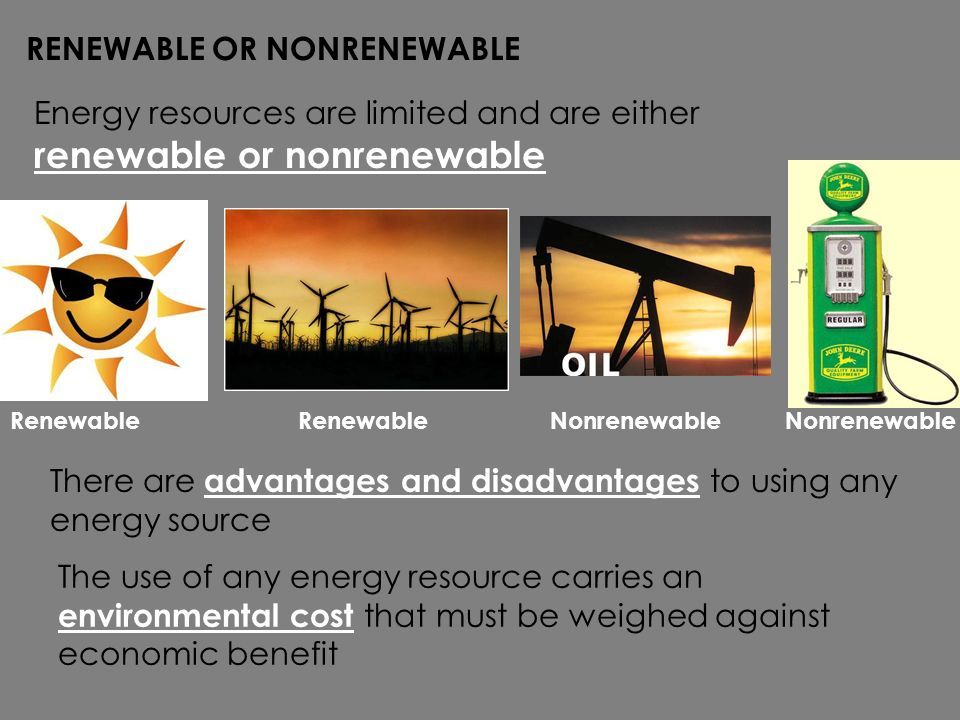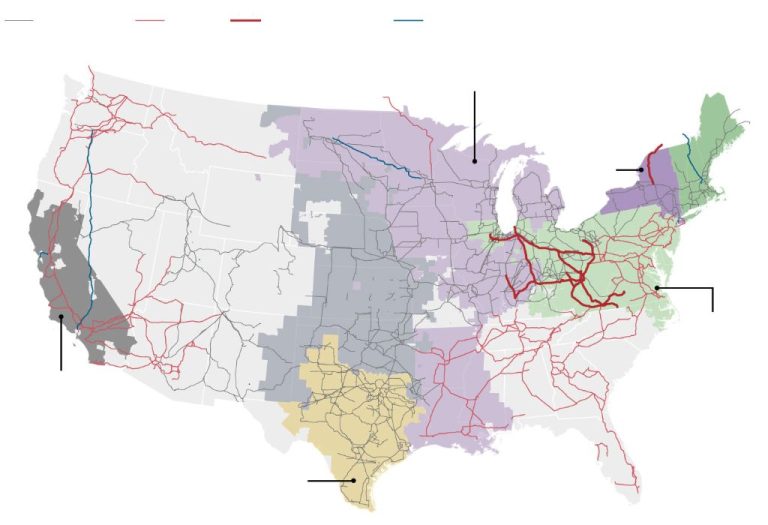Are Energy Resources Limited?

Energy resources refer to the various sources of power that can be harnessed and converted into usable energy to power human activities. According to Energy Education (2022), “energy resources involve considering all types of energy source from various scientific and technological applications”. The main types of energy resources include fossil fuels like oil, natural gas, and coal, as well as renewable sources like solar, wind, hydropower, geothermal, and biomass.
This article examines whether energy resources are limited on planet Earth. We will analyze the current major sources of energy, trends in energy consumption globally, innovations in energy efficiency and new technologies, as well as environmental considerations. The goal is to provide a comprehensive overview of the topic and assess the outlook on energy resource availability now and in the future.
Fossil Fuels
Fossil fuels like oil, coal, and natural gas are formed over millions of years from the remains of living organisms. They are non-renewable energy resources, meaning their supply is limited and cannot be readily replenished.
According to the U.S. Energy Information Administration, the world has an estimated 1.73 trillion barrels of proven oil reserves, 491 billion tons of proven coal reserves, and 204 trillion cubic meters of proven natural gas reserves as of 2020. At current consumption rates, BP estimates these reserves are enough to last around 50 years for oil, 134 years for natural gas, and over 100 years for coal.
However, projections vary on exactly when fossil fuel reserves will be depleted. Consumption rates continue to rise globally, and new discoveries or extraction technologies could impact availability. Most experts agree that affordable oil and gas reserves will likely be substantially depleted by the end of this century if consumption follows its historical trajectory.
As fossil fuel supplies dwindle, extraction costs will increase and discoveries will become less frequent. This underscores the need for conservation, efficiency improvements, and transitioning to renewable energy sources that are replenished naturally.
Renewable Energy
Renewable energy comes from naturally replenishing sources like sunlight, wind, water, and geothermal heat. The major types of renewable energy are:
- Solar – Converts sunlight into electricity through solar panels and concentrated solar power plants.
- Wind – Harnesses the wind with turbines to generate electricity.
- Hydropower – Generates electricity through flowing water in dams and tidal power in coastal areas.
- Bioenergy – Converts biomass from plants and waste into liquid fuels and electricity.
- Geothermal – Uses heat from under the earth’s surface to provide heating or generate electricity.
According to the International Renewable Energy Agency (IRENA), global renewable energy capacity grew at a record pace in 2022, increasing by over 280 gigawatts (GW). This was over 8% higher than capacity additions in 2021.[1] Solar and wind power accounted for most of this growth. Total renewable energy capacity now stands at over 3,500 GW, enough to supply over 40% of global electricity demand.
The potential for future renewable energy growth is substantial given the virtually limitless supply of wind and solar resources. IRENA projects that under its Transforming Energy Scenario, renewable energy could supply over 90% of global electricity by 2050. However, growth rates need to accelerate further, by 150% compared to current plans, to achieve this energy transition and climate goals.[2]
Energy Consumption Trends
Global energy consumption has been steadily rising over the past several decades. According to Cambridge University research, total global energy consumption increased from 4,672 Mtoe in 1965 to 14,278 Mtoe in 2019. Developing countries, especially China and India, have driven much of this growth as they industrialize and raise the living standards of their large populations. Energy consumption is expected to continue rising to meet the needs of economic and population growth. The EIA projects world energy usage will grow 50% by 2050, with most of the increased demand coming from non-OECD nations.
There are several key factors that influence energy demand trends. Population growth results in more energy being needed across residential, commercial and transportation sectors. Economic growth and rising incomes increase energy use for appliances, vehicles, aviation and industrial processes. Urbanization also boosts energy needs. Technological changes can raise efficiency and temper energy demand growth. Government policies like fuel economy standards and building codes impact energy use. While renewables are growing quickly, fossil fuels still account for about 84% of global energy consumption currently.
Energy Efficiency
Energy efficiency improvements have played a major role in curbing energy demand growth in recent decades. Technologies like efficient lighting, high-efficiency appliances, smart thermostats, and building insulation have helped reduce energy consumption across sectors (IEA, 2021).
The rate of improvement in energy efficiency is expected to accelerate going forward. Key trends include the proliferation of LED lighting, which uses up to 90% less energy than traditional incandescents, and stricter efficiency standards for vehicles and appliances (BCSE, 2023). Widespread electrification in areas like home heating and transportation is also projected to drive efficiency gains as electricity replaces direct fossil fuel combustion.
According to IEA projections, improved energy efficiency could deliver over 40% of the emissions reductions required to reach net-zero by 2050 (IEA, n.d.). Realizing the full potential requires policies that incentivize efficiency, continued innovation, and consumer adoption of efficient technologies and practices. If accelerated, efficiency improvements could flatten and then reduce global energy demand, while enabling increased economic output and delivering substantial environmental benefits.
New Energy Technologies
There are several new energy technologies on the horizon that could drastically change global energy systems.
[Emerging technologies like fusion, hydrogen, bioenergy, geothermal, etc][1]
These new technologies have the potential to be highly scalable and provide vast amounts of clean, renewable energy with less dependency on fossil fuels. Some key emerging technologies include:
- Fusion – Fusion energy involves fusing atoms together to release energy. If harnessed successfully, fusion could provide a nearly limitless source of clean energy. However, significant scientific and engineering challenges remain. Experimental fusion projects aim to demonstrate feasibility of fusion energy within the next 10-20 years.
- Hydrogen – Hydrogen fuel cells and infrastructure could enable hydrogen to become a major energy carrier. Hydrogen can be produced through electrolysis using renewable electricity and does not emit greenhouse gases when used. However, more cost-efficient production and distribution infrastructure is needed for widespread adoption.
- Bioenergy – Using biomass feedstocks like crops, wood, and waste to produce energy. Advanced biofuels and bioenergy with carbon capture could provide carbon-negative solutions. However, impacts on land use and agriculture remain a challenge.
- Geothermal – Enhanced geothermal systems (EGS) can tap into geothermal energy stored deep underground through fracturing rock and injecting water. EGS could drastically expand usable geothermal resources. However, induced seismicity remains a constraint.
Widespread adoption of emerging energy technologies may still be 10-30 years away in many cases due to technical and economic barriers. However, R&D investments to drive down costs and prove feasibility could enable these technologies to reach commercial viability and have a transformative impact on energy systems by mid-century. Policy support through incentives, infrastructure investment, and streamlined permitting will also help facilitate deployment and integration with renewable energy.
Policy Actions
Governments worldwide have implemented various policies to encourage renewable energy development and improve energy efficiency. These include renewable portfolio standards that require utilities to source a minimum percentage of their electricity from renewables, as well as tax credits and rebate programs for renewable energy systems and energy-efficient products and homes (https://www.puc.nh.gov/Sustainable%20Energy/Reports/Key%20Findings%20&%20Recommendations%20-%20NH%20Independent%20Study%20of%20Energy%20Policy%20Issues_09-30-11.pdf). Many governments also provide subsidies for renewable energy research and development. Regulations on fossil fuel production, such as limits on emissions and extraction, have also become more common.
At the international level, agreements like the Paris Climate Accord have aimed to limit greenhouse gas emissions and global temperature rise through national commitments. The Kyoto Protocol also previously set binding emission reduction targets for developed countries. While the effectiveness of some policies and agreements is debated, they demonstrate the growing policy focus on transitioning to renewable energy and reducing fossil fuel dependence worldwide (https://www.sciencedirect.com/science/article/abs/pii/S0301421517301520).
Environmental Factors
The use of fossil fuels like coal, oil, and natural gas has led to major environmental issues like climate change and air and water pollution. Burning fossil fuels releases greenhouse gases like carbon dioxide that trap heat and cause the planet to warm (Environmental Impact of Energy System – an overview). The release of sulfur dioxide and nitrogen oxides from fossil fuel combustion also contributes to acid rain. Fossil fuel extraction and transportation can lead to oil spills and water contamination.
The environmental impacts of fossil fuels have driven efforts to transition to cleaner sources of energy like renewables. Solar, wind, hydroelectric and geothermal energy have much lower emissions and environmental footprints compared to fossil fuels. Government policies, investments and technological advances have helped increase the proportion of electricity generated from renewable sources versus fossil fuels. However, fossil fuels still make up the majority of global energy use. More progress is needed to curb greenhouse gas emissions and prevent the worst impacts of climate change (Usage of Energy Sources and Environmental Problems).
Conclusion
In summary, while fossil fuels like coal, oil and natural gas are inherently limited in quantity, renewable energy sources like solar, wind, hydroelectric, geothermal and biomass are constantly replenished and will never run out (https://personal.ems.psu.edu/~fkd/courses/cause2000/SemesterReports/NWmacro/Conclusion.html). However, renewable sources currently only make up a small percentage of global energy use. Energy consumption continues to rise globally, putting more strain on nonrenewable resources. At the same time, more focus is being put on energy efficiency and new technologies are being developed to utilize renewable sources more effectively.
In conclusion, while fossil fuels are clearly limited, with the right policies, technologies and behavioral changes, renewable energy sources can be scaled up to meet a much larger share of global energy demand. So in that sense, energy resources are not inherently limited, but their use needs to be transitioned in a sustainable way to renewable sources. More innovation, investment and commitment to clean energy are required to make this transition happen quickly enough to avoid supply shortages and environmental harm.
References
Sources consulted in writing this article include:
- International Energy Agency’s 2022 edition of the World Energy Outlook report
- U.S. Energy Information Administration’s Annual Energy Outlook 2022 report
- BP Statistical Review of World Energy 2022 report
- Academic journal articles on renewable energy technologies and their potential
- Reports from environmental organizations such as Greenpeace and World Wildlife Fund on energy sustainability
- Intergovernmental Panel on Climate Change assessment reports
- Energy policy papers from think tanks and research organizations






